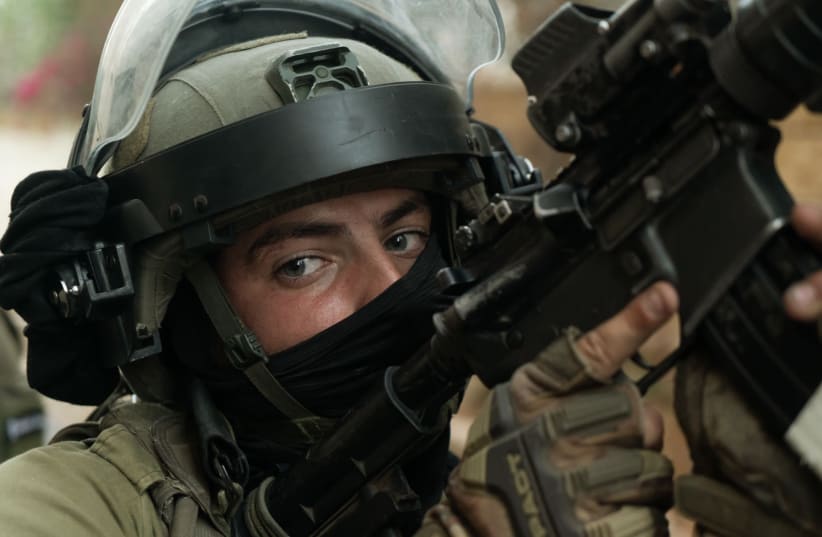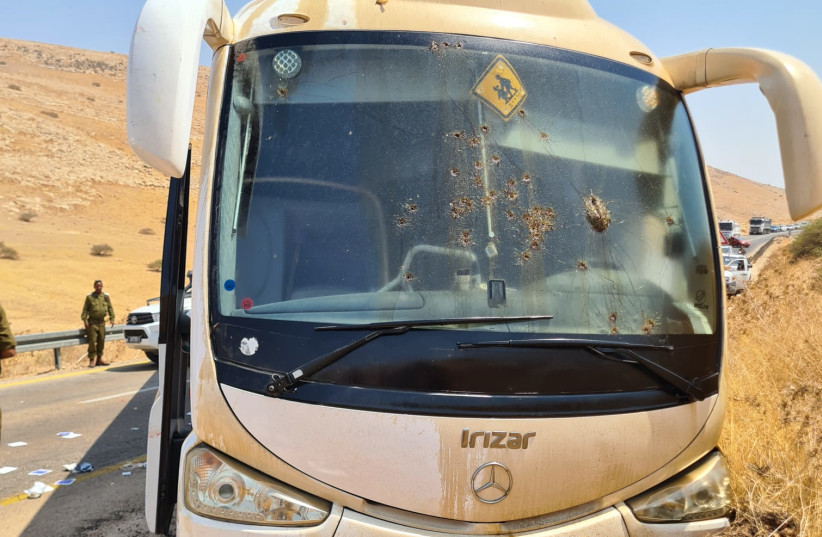There’s no such thing as spontaneous violence – especially in the West Bank. A glance of recent headlines is enough to know why.
The near-daily reports of Palestinian gunmen opening fire on soldiers and Israeli civilians come as the IDF continues with its crackdown on terrorism and weapons flood the streets and as the Palestinian Authority loses more and more control.
Did operations break the wave of terrorism?
Operation Break the Wave began in April after a wave of deadly terrorist attacks by Palestinians and Arab-Israelis killed 20 people.
Thousands of counterterrorism operations have been carried out by the IDF, the Shin Bet (Israel Security Agency) and the Israel Police. The wave of violence has since subsided, with no deadly attacks since May. Nevertheless, a shooting attack on a bus carrying troops in the Jordan Valley on Sunday could have easily ended with casualties.
Instead, Palestinians have focused their sites on targets close to home: soldiers guarding roads and checkpoints or who enter West Bank cities to detain wanted suspects.
These raids take place at night to reduce civilian casualties and surprise the suspects at home. But it’s not a secret, and armed gunmen as well as youths with firebombs and stones are ready for a confrontation even before the military convoys arrive.
More than 1,000 wanted Palestinians have been detained, and hundreds of weapons have been seized. But the suspects are not giving up without a fight.
Echoes of the Second Intifada
The IDF has likened the intense operation to Operation Defensive Shield, which was launched in the West Bank in 2002 to put down the Second Intifada. There has been an increase in gun battles between Israeli security forces and Palestinian militants.
The heavy clashes come as the IDF continues to thwart the smuggling of weapons, including handguns and US-made assault rifles, from Syria and Iraq through Jordan into Israel as part of Magen Hanegev (Negev Shield.)
While hundreds of these weapons have been confiscated, many more are able to make their way into the hands of Palestinians in the West Bank who have used them against Israeli civilians and troops.
Nevertheless, the operation has increased the average price of rifles and ammunition. The cost of a rifle has increased from NIS 80,000 to NIS 120,000, Walla reported.
The security establishment has focused its sights on the northern West Bank cities of Nablus and Jenin, where the majority of the attackers came from and where terrorist groups such as Hamas and Palestinian Islamic Jihad have a stronger grip than the PA Security Forces.
Hamas has made it clear that it prefers an outbreak of violence in the West Bank than in the Gaza Strip. It continues to build terrorist networks to carry out attacks, including shootings and bombings against Israeli targets.
Arrests and unrest in West Bank
The arrest of an Islamic Jihad commander in Jenin was the spark for the latest round of fighting in the Gaza Strip – Operation Breaking Dawn.
Israel continued with its Break the Wave raids in the West Bank during the three days of fighting, when Islamic Jihad launched more than 1,000 rockets.
Concerned over the escalation of violence, Defense Minister Benny Gantz has met several times with PA President Mahmoud Abbas. But the 86-year-old leader has little authority over the Palestinian street nearly 18 years after he was first elected.
The inability of the PA Security Forces to crack down on militancy not only leads Israeli security forces to carry out more operations, it is also driving support for terrorist groups that are filling the void of control.
Over the weekend, Hamas operatives near Jenin published a video that showed them training. It was later shared across social networks and Israeli news channels.
Rallies are also taking place during the day, with hundreds of Palestinians brandishing rifles, including youths and mothers of terrorists killed by Israeli security forces.
More than 85 Palestinians have been killed in the West Bank and Jerusalem this year by Israeli security forces, either while committing attacks or during clashes, the PA Health Ministry recently reported.
That number includes those who carried out attacks inside Israel and members of terrorist groups. It also includes 17 teenagers under the age of 18 and six women.
More than a dozen bystanders also have been killed, including a teenage girl who was returning home from studying and Shireen Abu Akleh, an Al Jazeera journalist who was covering an Israeli raid in Jenin.
It doesn’t take much to understand that tensions rise with every Palestinian death – be it by a Palestinian or IDF bullet.
Revenge is served hot in the West Bank, especially when assault rifles are in the hands of every local militant cell.

